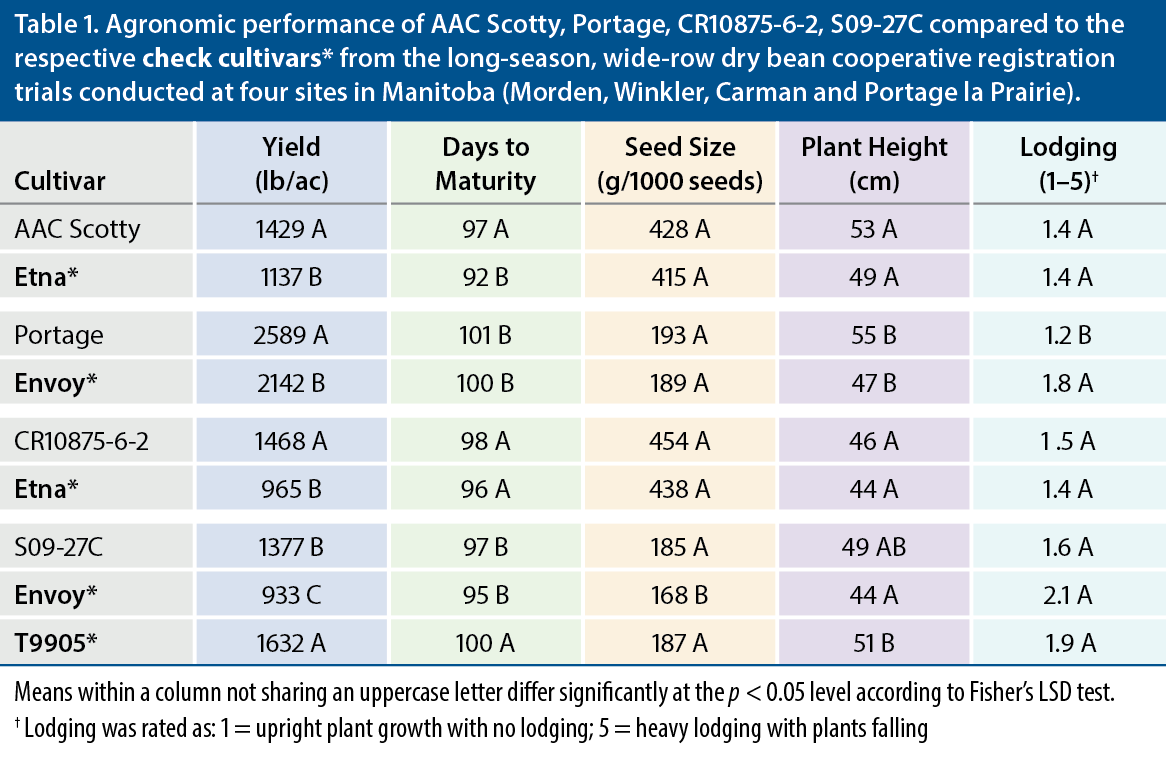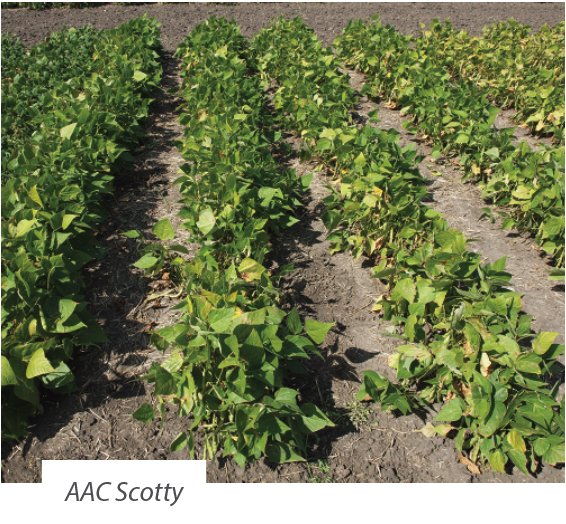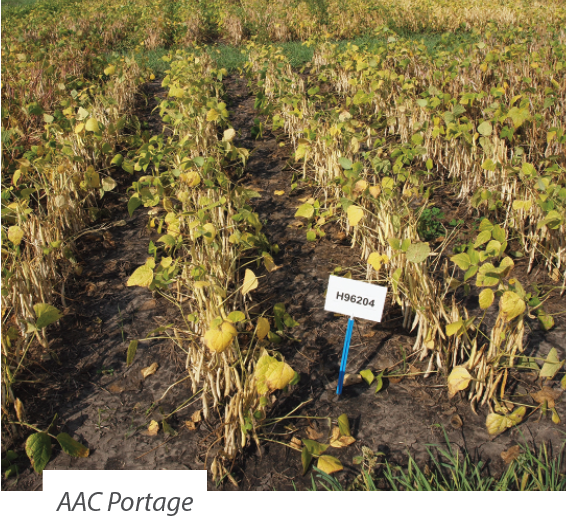Dr. Anfu Hou and Dr. Robert L. Conner (retired), Agriculture and Agri-Food Canada, Morden Research and Development Centre – Fall/Winter (December) Pulse Beat 2021
Dry bean breeding and research at Agriculture and Agri-Food Canada (AAFC) have been funded by Manitoba Pulse & Soybean Growers (MPSG) and the Pulse Science Clusters (Growing Forward I and II, and the Canadian Agricultural Partnership) to develop dry bean varieties for the pulse growers and industry in our region, and to generate knowledge for the scientific community.
The breeding objectives at AAFC– Morden have focused on yield improvement, early maturity, resistance to common bacterial blight, anthracnose, root rot and white mould, and improved seed quality. In collaboration with pulse pathologists and other researchers across Canada, understanding basic genetics and variety improvement for dry bean resistance to diseases and abiotic stresses (e.g., extreme moisture conditions) remains a priority.
Breeding activities have focused on major bean market classes, including pinto, navy and black beans, as other minor bean types (e.g., small red, Great Northern, yellow, pink) occupy low acreages and the variety replacement process is generally very slow. These breeding and research efforts have responded to changes in production trends, such as demand for more upright growth for direct harvest and later maturity for higher yield potential. And the program has carried out research projects on the application of molecular markers to disease resistance, seed quality and genetics of agronomic characteristics (e.g., maturity, yield and seed germination).
Students and postdocs have been trained through this program. And the research results have been presented at numerous scientific conferences, published in refereed journals and communicated to producers.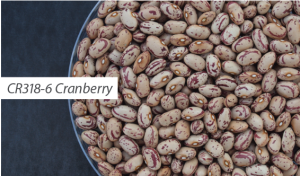
To date, there have been 13 breeding lines/germplasm supported for registration by the Prairie Recommending Committee for Pulse and Special Crops (PRCPSC) of the Prairie Grain Development Committee (PGDC). Those materials are being used in crosses for further variety development. Within AAFC, once a breeding line is released, the commercialization is taken over by the Office of Intellectual Property and Commercialization (OIPC). Calls for proposals are posted annually at OIPC and interested companies submit their proposals for adopting and marketing specific varieties. The breeders assist with pedigreed seed production in Idaho, where its dry and hot environment ensures the production of high-quality seeds free from major diseases like common bacterial blight.
Three varieties have been registered since 2009, including AAC Scotty, AAC Portage and Carman Black, and the exclusive rights of the varieties have been granted to Canterra Seeds Ltd. for marketing.
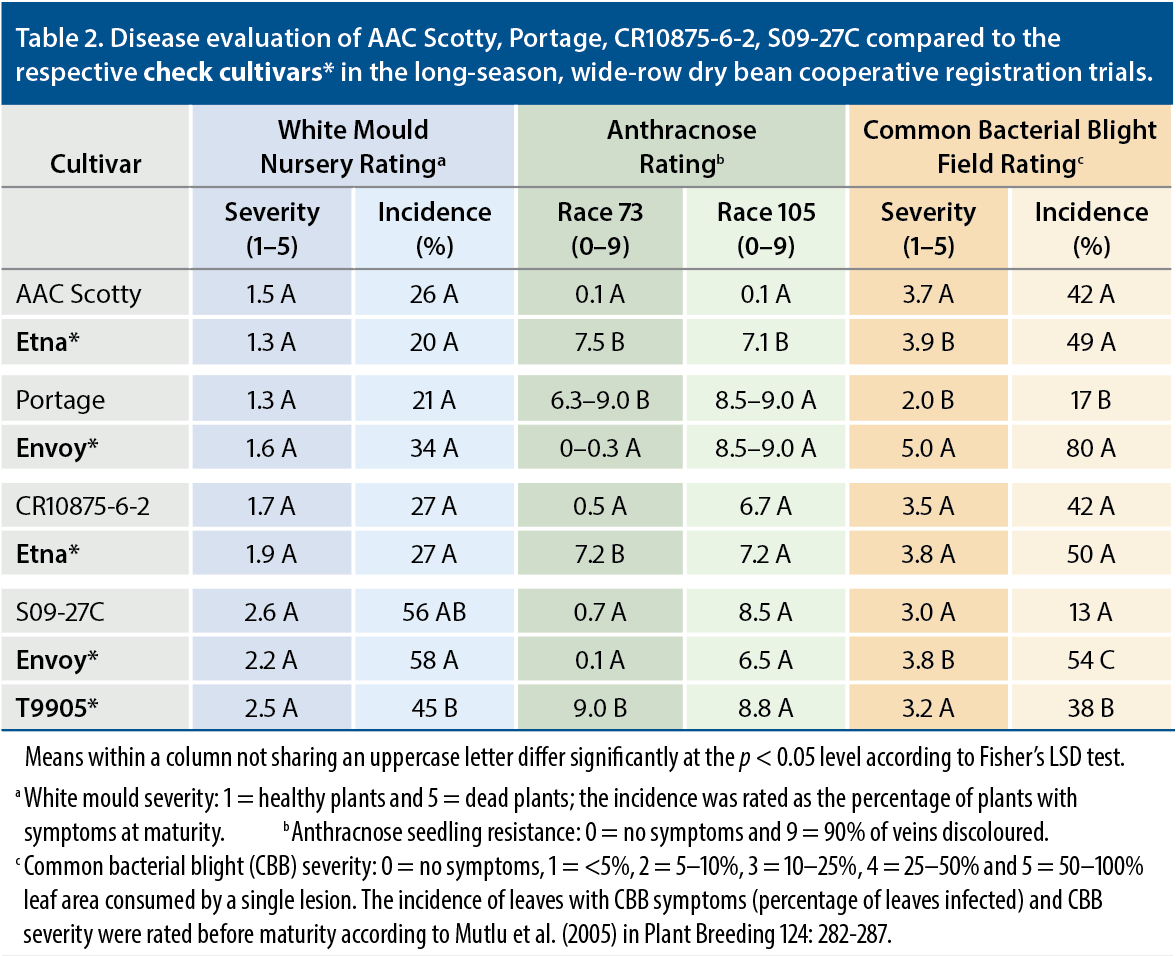 AAC Scotty Cranberry Bean (CR318-6)
AAC Scotty Cranberry Bean (CR318-6)
AAC Scotty was registered in 2017 and distributed by Canterra Seeds in Winnipeg/Meridian Seeds in North Dakota. This cranberry bean variety is high-yielding, reaching an average yield of 125% of the check cultivar, Etna (Table 1). The seed size of AAC Scotty (428 g/1,000 seeds) is slightly larger than Etna (415 g/1,000 seeds). The average maturity of AAC Scotty (97 days) is five days later than Etna (92 days). AAC Scotty is resistant to anthracnose (races 73 and 105), while Etna is susceptible (Table 2). And Scotty also has better resistance to common bacterial blight (CBB) than Etna. More information can be found in a publication on AAC Scotty cranberry common bean in the Canadian Journal of Plant Science (CJPS) (doi.org/10.1139/CJPS-2018-0110).
AAC Portage Navy Bean (056C-96204)
AAC Portage was registered in 2009 and marketed by Canterra Seeds in Canada and the U.S. It has very upright growth, which makes the variety suitable for direct harvest. Portage is a high-yielding navy bean variety with indeterminate growth, good seed quality and early maturity (Table 1). Portage is adapted to the Red River Valley of Manitoba. Its average yield was 21.3% higher than Envoy, while their maturity is similar. AAC Portage was the first navy bean variety in western Canada to be developed that has partial resistance to CBB. More information can be found in the publication, Portage common bean in CJPS (https://doi.org/10.4141/cjps2010-015).
CR10875-6-2 Cranberry Bean
CR10875-6-2 was supported for registration in 2020, but the commercialization process was delayed by the COVID-19 pandemic. CR10875-6-2 is a high-yielding cranberry bean line with an upright, determinate bush growth habit, good lodging resistance, good seed quality and disease resistance. In the long-season, wide-row dry bean cooperative registration trials over 16 station-years, the average yield of CR10875-6-2 was 152% of Etna. The seed size of CR10875-6-2 was similar to Etna and the average maturity of CR10875-6-2 was two days later (Table 1). CR10875-6-2 is resistant to anthracnose (race 73), while Etna is susceptible, and CR10875-6-2 and Etna had similar resistance to white mould and CBB (Table 2).
S09-27C Navy bean
S09-27C was also supported for registration in 2020, but the commercialization process was delayed by the COVID-19 pandemic. S09-27C is a high-yielding navy bean line with an upright and indeterminate growth habit, good lodging resistance, good seed quality, intermediate maturity and is adapted to southern Manitoba. In the long-season, wide-row dry bean cooperative registration trials over 13 station-years, the average yield of S09-27C was 145% of Envoy and 84% of T9905. The average maturity of S09-27C (97 days) was two days later than Envoy but three days earlier than T9905. S09-27C had better resistance to CBB than the checks and it is resistant to anthracnose (race 73), the same as Envoy, while T9905 is susceptible.


